This review of The Mirror and the Palette by Jennifer Higgie is from the May 2021 issue of Apollo. Preview and subscribe here.
What’s the best way to paint an apricot in oils? In 1663, the 30-year-old amateur painter Mary Beale laid out her method:
Let yor shadowes bee pinke & Lake and Bury oker & in some places […] according as ye life requireth it a litle fine Ultramarine: in some other places where ye shadowes are glowing & ffaint as they are sometimes in ye Crowne there touch upon yor generall rendering with pinke & Vermilion mixed together.
This apricot advice is the first known piece of writing on art by a woman, a statement of technical capacity that reflects Beale’s ambition to be considered a serious artist in the years before she sold a painting. A decade on, she was a hugely successful portraitist in London, taking in 83 commissions in one year at the height of her popularity. Self-Portrait, Holding an Artist’s Palette (1675) shows us a woman dressed in silks and posed in front of a classical pillar, her gaze meeting the viewer’s as she holds up brushes and mahlstick; the daubs of orange and white on her palette match the colours of her dress, a witty touch that allows the finished picture to capture the smallest details of its making.
For centuries, as Jennifer Higgie argues in her wide-ranging cultural history, women’s painting and self-portraiture have developed in symbiosis. Pliny’s Natural History of AD 77 contains the first mention of a self-portrait accomplished with a mirror – by a woman, the Roman painter Iaia of Cyzicus. The 16th-century Flemish portraitist Catharina van Hemessen produced the first self-portrait at an easel; the first self-portrait with a musical instrument was the work of Lavinia Fontana; and, in the early 19th century, Hortense Haudebourt-Lescot was the first woman to depict herself sporting the traditional (male) artist’s beret. The decision many women artists took to focus on their own image, Higgie explains, makes sense in the light of their historic exclusion from other genres. Female painters during the Renaissance, for example, were barred from prestigious fresco commissions because they weren’t permitted to work on scaffolds. Over the centuries, the structural inequalities that kept women out of the most important arenas – life-drawing classes, academies, exhibitions, commercial galleries, art historiography – couldn’t stop them from picking up a paintbrush and a mirror.
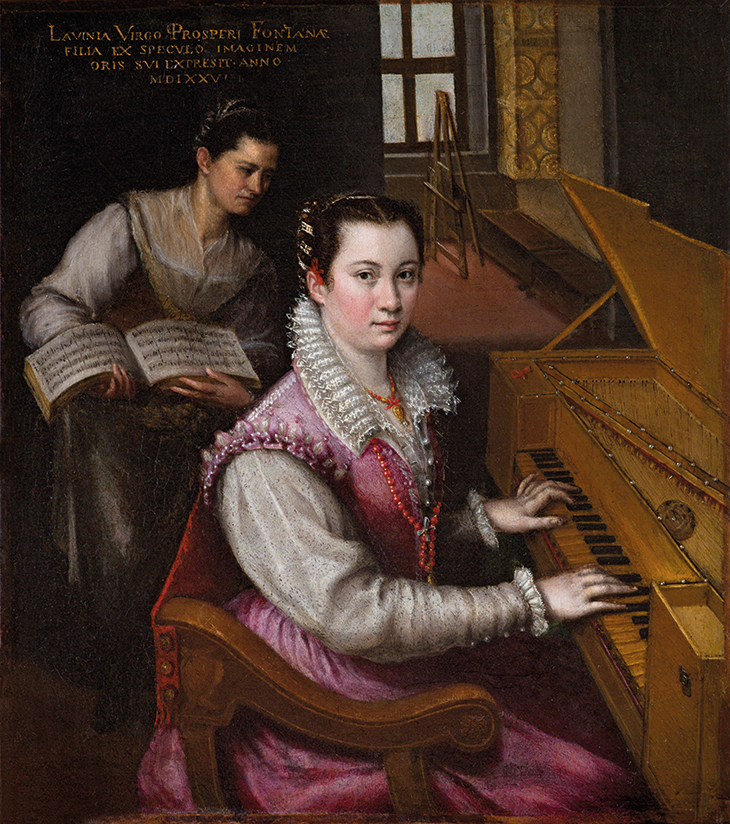
Self-Portrait at the Spinet (1577), Lavinia Fontana. Accademia di San Luca, Rome
Higgie’s approach to the subject is thematic, centring each chapter on an idea or a problem relevant to women’s portraiture – ‘Smile’; ‘Solitude’ – and using it to illuminate the lives and works of several painters from the Renaissance to the late 20th century. Her definition of self-portraiture is broad, taking in histories, landscapes and portraits of other sitters that bear reading as self-reflexive. Two Girls (1939) by the Hungarian-Indian artist Amrita Sher-Gil, for example, is discussed as a depiction of the self as split in two, part-European and part-South Asian. The emphasis throughout is on modes of self-representation that can also be understood as acts of self-assertion, small but significant forms of resistance. Sofonisba Anguissola’s sophisticated depiction of her teacher, Bernardino Campi, at his easel painting her portrait (c. 1559) ostensibly depicts a male mentor in the act of ‘creating’ his female prodigy; but the size and prominence of Anguissola’s image relative to Campi’s suggest a different story.
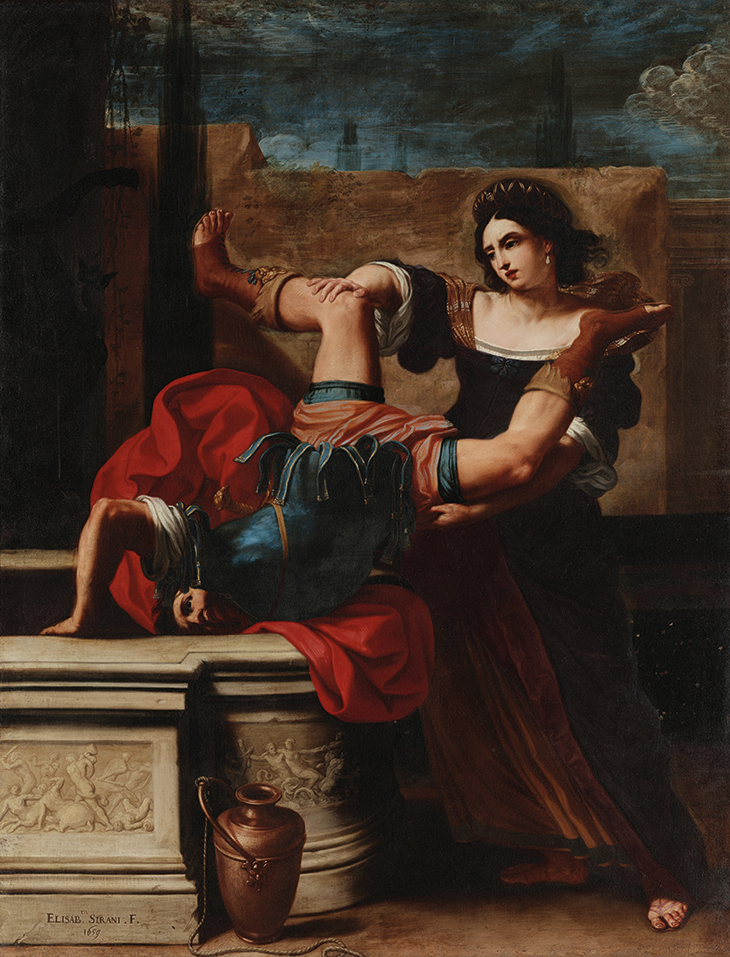
Timoclea Kills the Captain of Alexander the Great (1659), Elisabetta Sirani. Museo Nazionale di Capodimonte, Naples
A chapter on allegory considers the uses of symbolic form to women artists in particular, the space created for self-expression by modes of implication and omission. Artemisia Gentileschi’s cropping of the composition in her Self-Portrait as the Allegory of Painting (c. 1638–39) allows her brushes and palette to be shown in her hands rather than (conventionally) at her feet, emphasising the artisanal nature of painting alongside its intellectual aspects. Elisabetta Sirani’s treatment from 1659 of the story of the Roman matron Timoclea, with its unusual focus on the moment at which Timoclea pushes her flailing rapist into a well, both inverts the traditional power dynamic between the sexes (the assailant is literally turned on his head) and hides Sirani’s own features in the fine self-possession of her protagonist’s face.
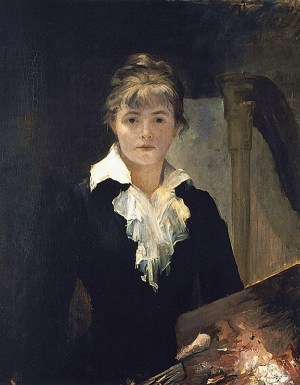
Self-Portrait with Palette (1883), Marie Bashkirtseff. Musée des Beaux-Arts Jules Chéret, Nice. Artepics/Alamy Stock Photo

Self-Portrait on her Sixth Wedding Anniversary (1906), Paula Modersohn-Becker. Paula Modersohn-Becker Museum, Bremen
Self-portraits can be made to express debility as well as strength. Nora Heysen’s Down and Out in London (1937) shows the artist looking blankly into the distance in a dull kitchen, framed by a washing-up bowl and hanging laundry. Helene Schjerfbeck’s final self-portraits, painted in 1944–45 when she was in her eighties, chart her physical decay, the bare lines that trace the shape of her skull protruding from a mass of shadows. In Self-Portrait as ‘Winter’ (1730–31), Rosalba Carriera depicts herself in her late fifties as an embodiment of the season, her pale blue eyes and fine hair rendered in chilly pastels; while in Self-Portrait with Palette (1880), the young Marie Bashkirtseff, already ill with tuberculosis, gazes out from a sombre, urgent composition in tones of brown and black. In vivid contrast, there is Alice Neel’s nude portrait of herself at 80 (1980), where the selection of shocking oranges, greens and blues is a match for the robust gaze of the artist and the unapologetic presentation of her body.
The naked female self-portrait and the new ground it covers in the 20th century are the subject of Higgie’s final chapter. A humble request by women students at the Royal Academy in 1878 for access to life-drawing classes (‘We venture […] very respectfully to ask you to take into consideration the practicability of making some arrangement for which we might be enabled to study from the figure [semi-draped]’) seems to belong to a different world to Paula Modersohn-Becker’s groundbreaking full- and three-quarter-length nude self-portraits of 1906–07, in which statuesque figures, tipped with highlights of orange and red, rise up from solid grounds.
Higgie’s descriptions of the repressive conditions under which women artists have operated can be repetitive and generalising, and in a handful of cases (those of Gwen John and Leonora Carrington, for example) the focus on biography outweighs discussion of the work. But the book’s ‘meandering and personal’ approach, as she describes it, gives us an accessible, sympathetic view of women’s emancipatory use of self-portraiture to ‘reflect the world back on itself’.
The Mirror and the Palette by Jennifer Higgie is published by Weidenfeld & Nicolson.
From the May 2021 issue of Apollo. Preview and subscribe here.
Unlimited access from just $16 every 3 months
Subscribe to get unlimited and exclusive access to the top art stories, interviews and exhibition reviews.


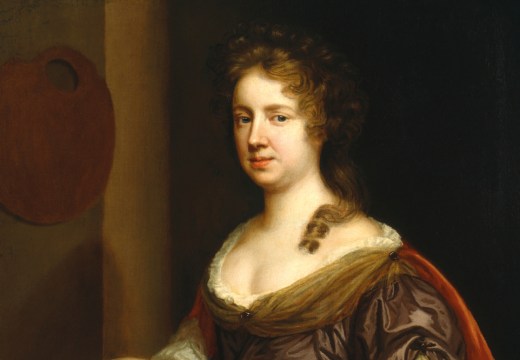
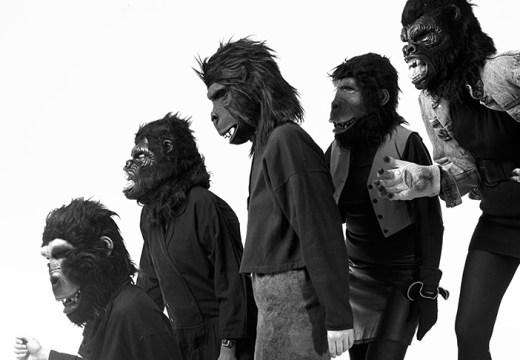
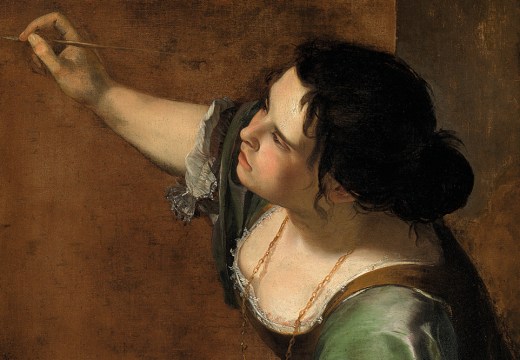









![Masterpiece [Re]discovery 2022. Photo: Ben Fisher Photography, courtesy of Masterpiece London](http://www.apollo-magazine.com/wp-content/uploads/2022/07/MPL2022_4263.jpg)
Has the Fitzwilliam lost the hang of things?